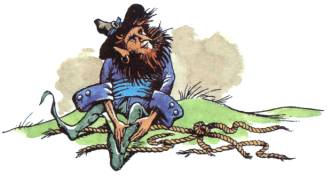Tags

Red Dwarf
C. S. Lewis is one of my favourite authors and I’ve always loved his Chronicles of Narnia. So, for the curious-minded, here is how the Narnian dwarfs (as Lewis spelled it), might work as a dwarven subrace in Dungeons & Dragons 5th edition.
Dwarf, Narnian (subrace)
There is much that can be said about the dwarfs of Narnia, both good and bad. It is said that there have been no creature created by Aslan who is more cunning and more skilled… and (with the possible exception of humans) more vulnerable to corruption. Dwarfs value hard work, craftsmanship, pragmatism, and loyalty above all, especially loyalty to kin and kind.
Industrious
Above all, dwarfs love to work. They are smiths, miners, stonemasons, jewellers, even brewers. A dwarf is never happier than when he is working, and their are well-known for their craftsmanship throughout the land. So much of their identity is tied-up with industry that dwarfs have a hard time understanding people who do not work like they do – there are few insults among dwarfs greater than being called “lazy.” This devotion to hard-work is further enhanced by the fact that dwarfs require far less rest than any other races do. They can work long and hard, and are constantly shocked by long other people have to be “lying around.”
Practical
Dwarfs pride themselves on their practically and “down-to-earth” nature. They have no interest in pomp and ceremony, court manners and whatnot. They prefer to be blunt, forward, and get the job done as efficiently as possible. This explains their skill in archery. Most Narnian human nobility are knights who favour melee combat with sword and lance. Though these folk recognize archery’s importance on the battlefield, they consider it less honourable and heroic than facing the enemy in direct melee combat. Dwarfs have no such qualms, and are cheerfully willing to shower their enemies with arrows before they get anywhere near them. As a result, the archery units of Narnian armies often consists mainly of dwarfs and yeoman (who don’t follow the knightly code), and the occasional woman (who also is not bound by the code).

Black Dwarf
Ethnically Loyal
Most dwarfs recognize any other dwarf as a like-minded individual, cut from the same stone (metaphorically), more alike than any human, faun, or talking animal could ever be. That isn’t to say that dwarfs feel no loyalty to non-dwarfs – many do – but everything else being equal, a dwarf is likely to take a fellow dwarf’s side in an argument, and few things will enrage a dwarf more than the notion that his “people” aren’t being treated fairly. As a result, dwarfs generally prefer to live with other dwarfs, often with three, five, or seven dwarfs all sharing the same cavern or cottage. Some rare dwarfs will share a home with non-dwarfs, but they are the exception rather than the rule.
Corruptible
It is no secret that of all the non-human races created by Aslan, dwarfs are the ones most likely to fall from grace. Some find their industriousness warped to greed and pride, others care so strong about the dwarf race that they turn against all others, and some become so coldly utilitarian that they will willingly work for any side that seems to be treating them fair enough – whether dark king, wicked witch, or demon.
Red Dwarfs & Black Dwarfs
Narnian dwarfs are divided into two kinds. Red dwarfs have red hair and beards as soft as fox fur, whereas black dwarfs have black hair and beards as tough as horse hair. Red dwarfs are generally friendlier than black dwarfs, more willing to associate and even befriend non-dwarfs, whereas black dwarfs are far more suspicious and bad-tempered, often believing that the only kind of person a dwarf can trust is another dwarf. Though black dwarfs are more likely to go astray than red dwarfs, there have certainly been bad red dwarfs and good black black dwarfs.
Half-Dwarfs
Either the child of a dwarf and a human or the descendent of people who were. Most half-dwarfs were born after the Telmarine Invasion, when many dwarfs disguised themselves as humans to avoid the purges. Many dwarfs (especially black dwarfs) despise half-dwarfs, both for not being “pure” dwarfs and because their very existence reminds people that their ancestors chose to deny their dwarf identity (something utterly repugnant to most dwarfs). With the rise of King Caspian X, much of the dwarfen prejudice against half-dwarfs is decreased.
Narnian Dwarf Traits
With the exception of alignment, red and black dwarfs have identical statistics.
Dwarf: Narnian dwarfs have all of the traits of regulars dwarves.
Alignment: Dwarfs value laws, tradition, and orderliness, and are almost always Lawful. Red dwarfs, relatively friendly and easy-going, are generally Lawful Neutral or Lawful Good. Black dwarfs, however, are more likely Lawful Neutral or Lawful Evil.
Ability Increase: Your Intelligence score increases by 1.
Fell Archer: You have proficiency in shortbows and composite shortbows. If your character class already gives you proficiency in those weapons, then you gain +1 to hit with them.
Unrelenting: Narnian dwarfs need less rest than others do, and if necessary can march all day and all night. You only need to rest for 15 minutes to gain the benefit of a short rest (rather than an hour) and sleep for 3 hours to gain the benefits of an extended rest (rather than 8 hours).
